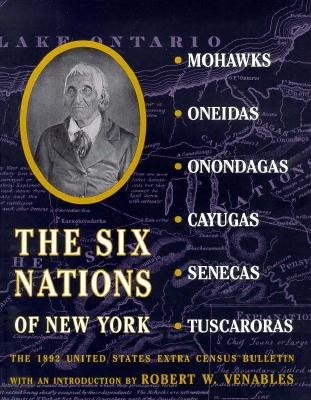
- We will send in 10–14 business days.
- Author: Henry B Carrington
- Publisher: Cornell University Press
- ISBN-10: 0801483174
- ISBN-13: 9780801483172
- Format: 21.7 x 27.9 x 1.3 cm, minkšti viršeliai
- Language: English
- SAVE -10% with code: EXTRA
Reviews
Description
In 1892 the U.S. Census Printing Office published a report on the Six Nations in New York State which collected evidence still used today by the Six Nations to defend their legal rights. The 1892 census purported to be an objective report on the condition of the Iroquois. General Henry B. Carrington, special agent, U.S. Army (retired), was "to spend months among the Indians making careful observations respecting their various political, religious, and social meetings, their homes, health, and habits." The study, carried out at the time of the battle at Wounded Knee, was the first step in the government's plan to eliminate reservations: once land was privately held by individual Native Americans, it could be taxed. The census presented ample evidence of the Iroquois success in balancing their heritage with contemporary challenges and opportunities. The agents misconstrued their subjects' willingness to assimilate but also recognized that legally the Indians could become U.S. citizens only by renouncing their tribes. The report tried to assess--from statistics and individual accounts of traditional religious beliefs, practices, and ceremonies; of social practices and moral values; of health, property, and education--whether the Iroquois could be assimilated. In the process, it accumulated data, fascinating details, and photographs that bring history alive a century later.
EXTRA 10 % discount with code: EXTRA
The promotion ends in 23d.00:59:17
The discount code is valid when purchasing from 10 €. Discounts do not stack.
- Author: Henry B Carrington
- Publisher: Cornell University Press
- ISBN-10: 0801483174
- ISBN-13: 9780801483172
- Format: 21.7 x 27.9 x 1.3 cm, minkšti viršeliai
- Language: English English
In 1892 the U.S. Census Printing Office published a report on the Six Nations in New York State which collected evidence still used today by the Six Nations to defend their legal rights. The 1892 census purported to be an objective report on the condition of the Iroquois. General Henry B. Carrington, special agent, U.S. Army (retired), was "to spend months among the Indians making careful observations respecting their various political, religious, and social meetings, their homes, health, and habits." The study, carried out at the time of the battle at Wounded Knee, was the first step in the government's plan to eliminate reservations: once land was privately held by individual Native Americans, it could be taxed. The census presented ample evidence of the Iroquois success in balancing their heritage with contemporary challenges and opportunities. The agents misconstrued their subjects' willingness to assimilate but also recognized that legally the Indians could become U.S. citizens only by renouncing their tribes. The report tried to assess--from statistics and individual accounts of traditional religious beliefs, practices, and ceremonies; of social practices and moral values; of health, property, and education--whether the Iroquois could be assimilated. In the process, it accumulated data, fascinating details, and photographs that bring history alive a century later.


Reviews